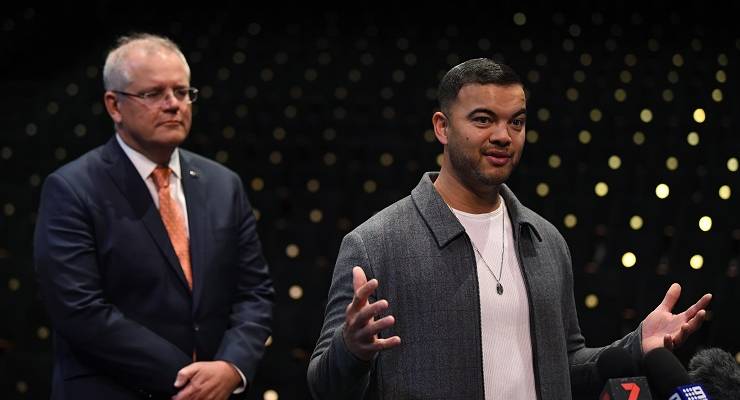
It’s an iron law of politics that the squeaky wheel gets the grease. Yet in spite of a quarter-century of the Australian arts sector being systematically squeezed — derided as a self-indulgent drain hole for public money — there has been very little squeak, with no effective and sustained campaign for funding of the sector as a whole.
Under pressure, bodies fracture. That’s another iron law. The failure to get a campaign off the ground despite the desperate need appears to indicate a sector that has Balkanised.
The sector is broken up into disciplines (dance, writing, visual arts, music, theatre, film and television) and within each sit sub-disciplines, state and regional bodies, small to medium v large, and Indigenous bodies. And each of these has its own peak bodies, personalities, internal cultures, historical baggage, and different policy and cultural focuses.
A lot of people in the arts are keen for a broad campaign. Some believe they’ve already fought a war against government austerity and lost.
Having articulated every argument and counterargument for funding within their milieu for so long, many imagine those arguments have penetrated the general population through osmosis and have been found wanting. They haven’t. Very few campaigns have pierced the arts bubble and those that have haven’t been sustained.
The electorate must be won over
The effective notion for the arts is not in its relationship to government but in its view of the electorate’s capacity to be won over. If you can demonstrate your capacity to cause political damage your lobbying efforts with political parties improves exponentially.
Is it any wonder the electorate might hold wary views of the arts and arts funding when the sector has been relentlessly positioned as an esoteric and niche enterprise, populated by people who have nothing in common with the general population but don’t mind dipping their hands into the public purse?
That’s the type of framing the arts gets in Australia with absolutely no counter narratives to challenge it.
But here’s the curious thing. About a week after Jimmy Barnes, Tina Arena and Guy Sebastian started campaigning for an arts package this year, a $250 million package materialised. (That it doesn’t appear to have manifested yet is not unique.)
And this is the essential issue that the arts sector needs to wrap its head around if it’s to become one of the most potent political forces in this country.
Let me repeat that: the arts as a lobbying group could be one of the most potent political lobby groups in Australia.
And the issue is finding ways to frame the arts as having real meaning and connection to Australians.
Making the arts a political force
Everyone’s heard of the Minerals Council of Australia. Its potency lies in the rivers of gold it swims in that allows it to produce and run ads that link the health of the mining industry to jobs and economic prosperity.
But there are two lesser-known but extremely powerful lobby groups — the Pharmacy Guild, and Pathology Awareness Australia — which represent chemists and pathologists.
Not particularly sexy, but their reach into every Australian suburb makes them potent. The latter garnered the third-largest number of signatures on a petition in Australian history, forcing the Turnbull government to scrap Medicare reforms during the 2016 election. And if the former ever campaigned against the government, it has the ears of millions of elderly Australians worried about their health, meds and the price of prescriptions.
That’s the potency: having an army of campaigners in every Australian town and suburb.
That is the essential task of a lobbying campaign. To get in front of people and to make that issue an important consideration in every electorate. It’s not the job of a lobbying group to win over 50% plus one of the population to its “sector”. It’s about personalising things — drawing the lines between damage to the sector and to the electorate.
An arts campaign should be four-pronged and include: a media campaign (traditional, social, digital), political lobbying (ally building, friends of the arts groups, political advocacy), events (fundraisers, panel discussions, publicity stunts), and outreach (artists and influencers, pro-bono assistance, arts bodies).
Can you imagine the impact of getting on board the likes of Magda Szubanski, Jimmy Barnes, Mick Molloy, or Deborah Mailman to talk about the value of the arts to Australian culture and national identity and running them non-stop to targeted groups on social media and in the news? Or videos of ordinary Australians and what the arts means to them and their families?
Think of all the dance schools, music teachers, pubs, bars in every town and suburb acting as advocates for arts funding leading into the election. If the government is worried about the impact of chemists in every suburb, imagine that times 10.
There’s no doubt that many arts bodies are skint, but there are philanthropists out there that will fund a campaign, not to mention the general public. And think of the money that can be raised from fundraising events across the nation.
A well-funded and bipartisan campaign will transform this sector. All that’s needed is the political will and a coalition of the willing.








It’s easy to say “they should make the argument for the value of the (Australian) arts” but it’s a difficult argument to make to a population happily engulfed by American entertainment.
Get the Utopia TVswries team on to it.
TV series
I see that Kate Ceberano is getting political on her social media platform so the lobbying has begun…
Shaping the message is the perennial problem. How to express the value of the arts in a popular and powerful way
Everything in this article is correct. Thank you. The biggest factor is will.